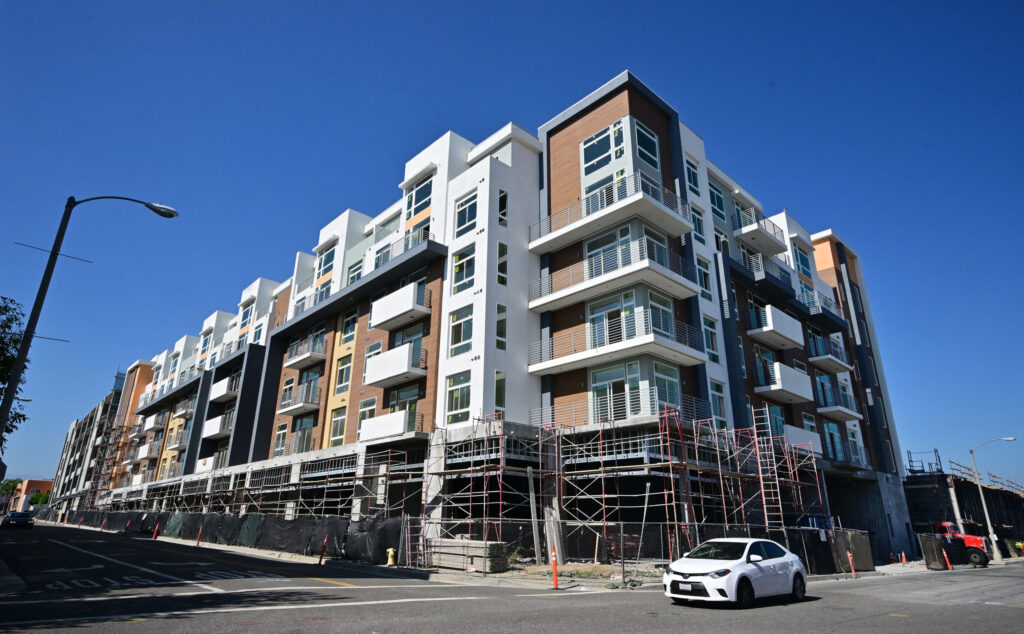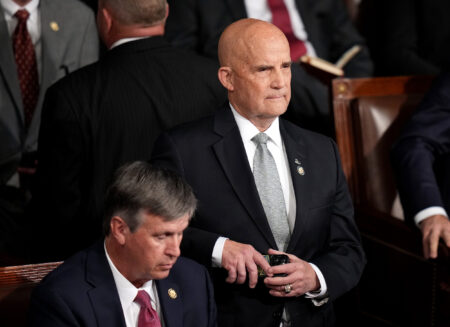Prices in the U.S. condo market reported their second largest year-over-year drop on record in May, according to a new report by Redfin—falling by 2.2 percent compared to a year earlier.
In May, the latest data available, the median sale price of a typical condo in the U.S. was $354,100—almost as low as in spring 2023, when the country was facing a significant correction and condo prices plunged by 2.9 percent.
While the overall U.S. housing market faces a slump as mortgage rates continue hovering around the 7 percent mark and economic uncertainty grows across the country, the condo market is facing a much more dramatic downturn than the single-family one.
By comparison, the median sale price of a single-family home in the U.S. rose by 0.5 percent in May compared to a year earlier to $462,206. Encouragingly for buyers, this was the slowest home price growth reported in almost two years, but prices have not yet stopped rising.
Why Are Condo Prices Falling?
Condo prices are falling because sales have shrunk in recent months as inventory surged. According to Redfin, there are about 80 percent more sellers than buyers in the condo market. Many of these sellers are trying to offload their properties to avoid rising homeowners association (HOA) fees and home insurance premiums, the same reason keeping buyers away from these listings.
In May, condo sales nationwide were down by 11.9 percent compared to a year earlier. It was the largest decline since June 2024 and was more than three times larger than the 3.7 percent drop reported in the single-family homes market.
“The condo market has been hit with various skyrocketing costs, such as HOA fees and insurance premiums, which make condos less affordable in many markets. These additional costs not only make condos unaffordable but also less predictable investments,” Daryl Fairweather, Redfin’s chief economist, told Newsweek.
On top of that, Fairweather said, the “stark imbalance” between sellers and buyers is causing “a big buildup in inventory—the highest level in a decade.” Existing condos for sale are also facing the competition of newly built ones, which are still landing in the market despite a recent slowdown in multifamily construction.
“Many sellers are offloading condos for these same affordability challenges around rising HOA fees, insurance and special assessment costs. Because of the imbalanced market, condo prices are falling in many cities, which is also encouraging owners to get out ASAP,” Fairweather said. “Buyers are reluctant to purchase condos for these very same reasons around affordability.”
There is also the problem of the growing number of condos that don’t qualify for Federal Housing Administration (FHA) loans.
“There are new federal regulations and financial requirements preventing condos from qualifying for FHA loans,” Fairweather said.
“Condos are also under more scrutiny following the Surfside collapse in Florida, which showed the need for more building scrutiny. This is especially significant as the condo stock ages, especially in places like Florida, California and the Northeast,” she added. “Again, this means buyers have a lot to consider when it comes to the cost benefit of investing in condos.”
The Epicenter of the Condo Slump
The nationwide condo market’s dramatic 2 percent year-over-year price drop pales in comparison with the declines reported in Florida, the state leading the nationwide condo slump.
Seven of the 10 U.S. metros with the largest price declines in May, according to Redfin, were in the Sunshine State, with Deltona reporting the steepest year-over-year drop in the nation at 32.2 percent. The median sale price of a condo in the city was $235,000 in May.
It was followed by Crestview, Florida (-32 percent); Houston, Texas (-23 percent); Oakland, California (-20.3 percent); Tampa, Florida (-19 percent); Cape Coral, Florida (-15.9 percent); North Port, Florida (-15.5 percent); Naples, Florida (-11.4 percent); Orlando, Florida (-11.4 percent); Ann Arbor, Michigan (-11 percent); and Austin, Texas (-11 percent).
“Florida is a challenging market generally right now due to slumping sales, lower home values and insurance complications,” Fairweather said. “However, the condo market is facing an even more extreme version of this. On top of rising insurance costs due to climate threats, many buildings have become uninsurable altogether. And following the Surfside collapse in Florida, buildings are facing new regulatory pressure and inspections.”
Florida lawmakers passed a new building safety law following the tragic collapse of the Champlain Towers South condo in Surfside in June 2021. The new regulations, which came into force at the end of 2024, require aging condos in the state to undergo structural inspections and shore up reserves necessary for repairs and maintenance.
The new law has led to an explosion of condo sales in Florida’s coastal markets as many sellers seek to avoid higher HOA fees.
No Way Out in Sight
The condo slump is likely to continue, Fairweather said, especially in places such as Florida and Texas, which are seeing the biggest increase in HOA fees.
“They experienced a big increase in supply during the pandemic homebuilding boom, but demand has slowed significantly due to affordability challenges,” she said. “Condo prices are generally holding up best in the East, where supply is still a little crunched and holding up prices.”
In part of the Northeast, condo prices were still rising in May. New Brunswick, New Jersey, saw the biggest year-over-year price hike that month, with the median sale price of a condo in the city at $500,000. It was followed by Pittsburgh, Pennsylvania (+14.1 percent); Montgomery County, Pennsylvania (+14.1 percent); San Francisco, California (+8.8 percent); Ocean City, New Jersey (+8.2 percent) and Providence, Rhode Island (+7.6 percent).
Read the full article here

















